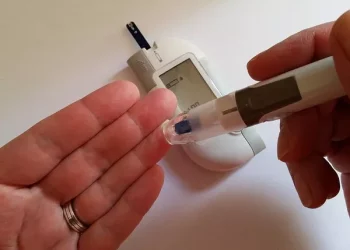A recent study published in JAMA Network Open highlights the impact of electronic reminders on flu vaccination rates, revealing that while these digital nudges effectively increased uptake among non-diabetic individuals, diabetic patients showed little to no response. Researchers suggest that more tailored interventions, particularly those integrated into diabetes care, could enhance vaccination rates for this high-risk group.
The study investigated whether electronic messaging could influence flu vaccination rates among diabetic patients compared to their non-diabetic counterparts. People with diabetes are particularly susceptible to severe flu-related complications, including pneumonia and bronchitis, making annual flu vaccinations critical. Despite this necessity, approximately 33% of diabetic patients neglect to receive their yearly flu shots. Contributing factors include cognitive challenges, decreased mobility, past negative experiences with vaccines, and general hesitance due to their health conditions.
The research conducted a secondary analysis of data from the Danish Nationwide Utilization of the Danish Government Electronic Letter System for Increasing Influenza Vaccine Uptake (NUDGE-FLU) randomized controlled trial (RCT). The study encompassed 964,870 individuals aged 65 and older, with a mean age of 73.8 years. Denmark boasts one of the highest vaccination rates globally; however, only 62.4% of the country’s 315,928 diabetic residents received flu vaccines.
Flu vaccine uptake among diabetic individuals aged 65 and older was recorded at 82.5%, compared to a mere 40.7% among younger diabetic patients, emphasizing the need for targeted strategies to boost vaccination rates in this younger demographic.
Study participants were randomly assigned to either a control group receiving standard care or one of nine electronic letter variations designed to encourage vaccination. Letters were dispatched in September and October 2022, and participants were monitored until January 1, 2023, without knowledge that they were part of an RCT.
The findings revealed that 12.8% of the study participants had diabetes, with the mean age of these individuals being 74.1 years. Notably, diabetic participants tended to be older males with pre-existing cardiovascular and chronic health conditions. In the previous flu season, about 82% of diabetic patients were vaccinated, slightly higher than the 76.9% of non-diabetics, likely due to the earlier onset of the flu that year. By the end of the follow-up period, vaccination rates increased to 83.5% for diabetics and 80.2% for non-diabetics.
The study noted a minor uptick in flu vaccinations among non-diabetic individuals who received the electronic letters compared to those receiving usual care, with an increase of 0.37 percentage points (80.4% versus 80%). The letters emphasizing cardiovascular benefits and those sent again after two weeks yielded improved vaccination rates for the non-diabetic group.
Conversely, diabetic patients exhibited no change in their vaccination behavior in response to the letters. Possible explanations for this resistance include reactance or fatigue towards the messaging. Interestingly, these patterns were not observed in other health behaviors, such as the use of glucagon-like peptide 1 receptor agonists (GLP-1RAs).
Further analysis revealed that diabetic patients with cardiovascular disease, those treated with GLP-1RAs or sodium-glucose co-transporter 2 inhibitors (SGLT2i), and those with a longer disease duration were more likely to get vaccinated, suggesting that these individuals may be more engaged in their healthcare.
In conclusion, while electronic reminders resulted in a slight increase in vaccination rates for non-diabetic patients, the same strategies proved ineffective for diabetic individuals. This highlights the necessity for more customized approaches tailored to the needs of diabetic patients to enhance their flu vaccination uptake. Future research should focus on developing and testing electronic communication strategies specifically designed for the diabetic population.
Related topics:
Body Fat Fluctuations Linked to Diabetic Nephropathy Risk
Three Autumn Foods to Combat Diabetes and Heart Disease
Continuous Glucose Monitoring and Health Equity: Reaching Those in Need


























